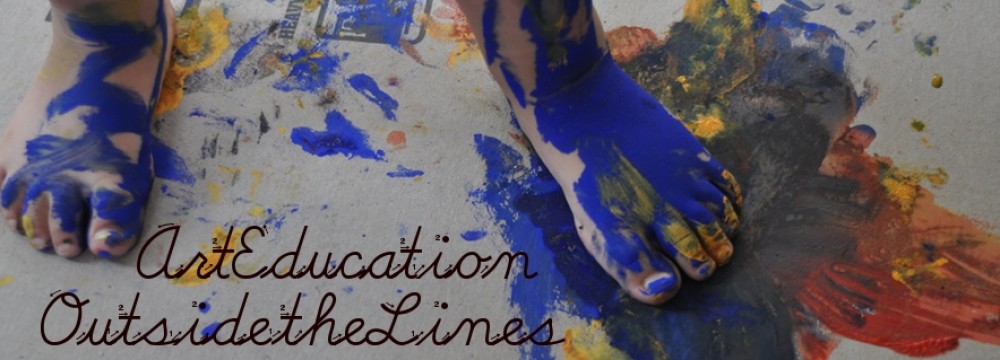Cora has been so busy lately it’s been hard to keep up. Even harder to find time and mental space to sit down and write about anything that’s been going on. She’s at this truly amazing stage where everything is interesting to her and once she sets her mind on something, she will pursue it with her full attention until she has exhausted her interest in it, or I cut her off because it’s time to drive her brother and sister to school, mow the lawn, go to bed… She has become a process artist.
In art education, we often talk about process versus product. In short, what we learn and experience while creating things isn’t always evident in the final product. This is especially true for performance artists and young children. The work of Marina Abramovic and Vito Acconci, to site some well-known examples, cannot be understood through a single image or description of their performances. They mean and are experienced differently by each viewer of, or participant in, their projects. Similarly, a piece of construction paper covered in glue and cottonballs made by a toddler means much more as evidence of a process the child engaged in than a work of art of itself.
 Shortly after Cora’s first day at school, I was raiding the basement for new materials to experiment with. I pulled a set of brightly colored rolls of tape out and she immediately ran to another corner of the room and pulled out an empty wrapping paper tube. She told me she wanted to put the tape on the tube. She sat for at least 40 minutes taking small strips of tape I cut for her and covering the tube with them. Turns out she got the idea from some kids at school who had done something similar. So, while I had to admit this wasn’t her original idea, I was still impressed that she was able to tell me what she wanted to do and then to execute it with such focus. In retrospect, I think it was really important for her to act out something she’d only watched others do. To experience it for herself.
Shortly after Cora’s first day at school, I was raiding the basement for new materials to experiment with. I pulled a set of brightly colored rolls of tape out and she immediately ran to another corner of the room and pulled out an empty wrapping paper tube. She told me she wanted to put the tape on the tube. She sat for at least 40 minutes taking small strips of tape I cut for her and covering the tube with them. Turns out she got the idea from some kids at school who had done something similar. So, while I had to admit this wasn’t her original idea, I was still impressed that she was able to tell me what she wanted to do and then to execute it with such focus. In retrospect, I think it was really important for her to act out something she’d only watched others do. To experience it for herself.

Like so many toddlers, Cora’s creative work is mostly about process. Marilyn Kohl (1994) writes in an authentic and informed manner on this subject in her introduction to Preschool art: It’s the process not the product which is full of ideas for initiating process art with young children. Many of these ideas could be scaled up for older audiences.
Cora’s not concerned with the look of a drawing when she is finished with it so much as the processes she engages in making them. For instance, the other morning, she dumped out a bin of crayons and oil pastels then picked them up one at a time, made a mark on her paper, then lined them up. It was like the rules Jenny Bartlett sets for herself while painting. I have long been a fan of process art so I find this really amazing to watch. It also, reminded me of Helen Molesworth’s exhibition for the Wexner Center Work Ethic (2003) which highlighted artists who tested the definitions of what it means to work as an artist. Cora rarely makes a drawing of anything. Rather, her drawings provide a record of something she was doing.
When a toddler is involved in process art she is experiencing the state of flow creative practitioners strive to maintain. It brings us peace and pleasure to be so absorbed in an activity that we are focused only on the moment at hand, on the process we are engaged in. Watching Cora in flow brings me to a parallel space, engaged by her engagement. Next up, finding more opportunities for me to find such moments for myself.
 I spent an hour and a half this morning tearing up an old bathroom floor. It felt wonderful. I only planned to take out the threshold today, just enough to make room for work to be done outside the doorway, but once I got started, I had to keep going. When I was a teenager I loved the band Guns and Roses. I guess part of me still has an Appetite for Destruction. I was feeling the Flow.
I spent an hour and a half this morning tearing up an old bathroom floor. It felt wonderful. I only planned to take out the threshold today, just enough to make room for work to be done outside the doorway, but once I got started, I had to keep going. When I was a teenager I loved the band Guns and Roses. I guess part of me still has an Appetite for Destruction. I was feeling the Flow.

